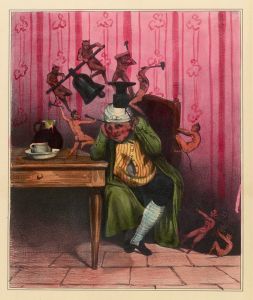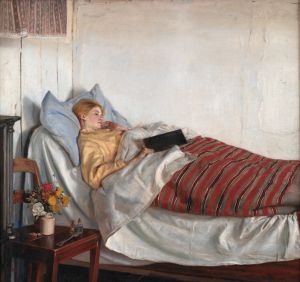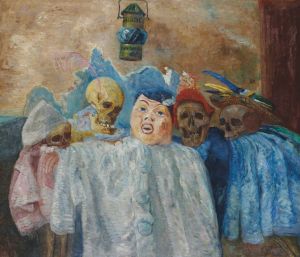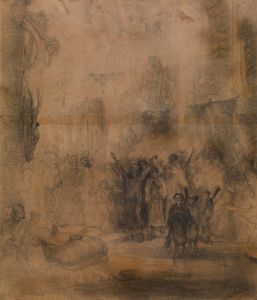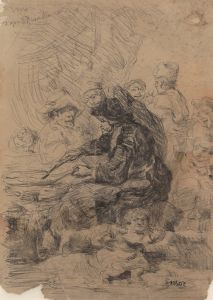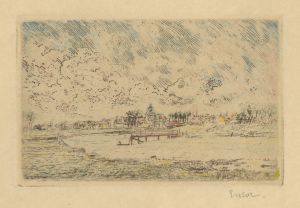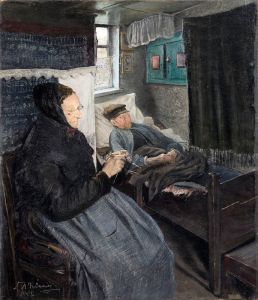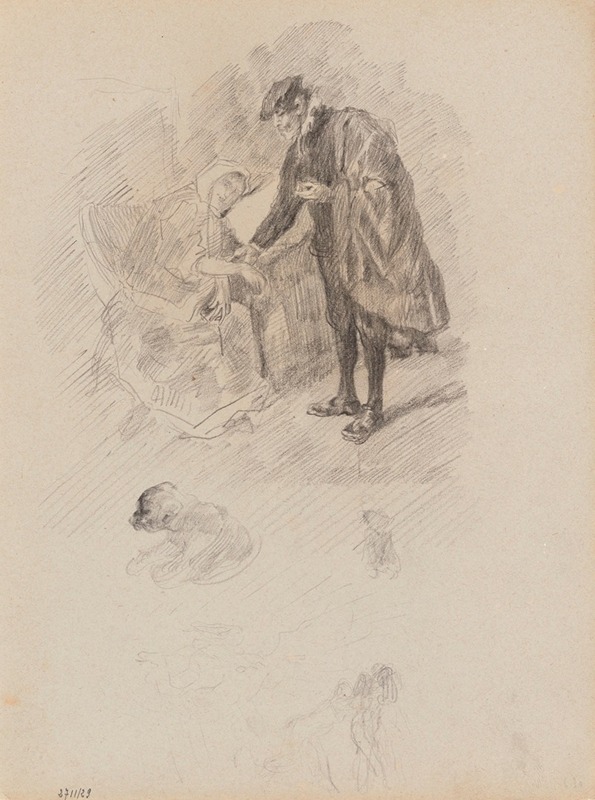
The Sick Woman
A hand-painted replica of James Ensor’s masterpiece The Sick Woman, meticulously crafted by professional artists to capture the true essence of the original. Each piece is created with museum-quality canvas and rare mineral pigments, carefully painted by experienced artists with delicate brushstrokes and rich, layered colors to perfectly recreate the texture of the original artwork. Unlike machine-printed reproductions, this hand-painted version brings the painting to life, infused with the artist’s emotions and skill in every stroke. Whether for personal collection or home decoration, it instantly elevates the artistic atmosphere of any space.
"The Sick Woman" is a painting by the Belgian artist James Ensor, created in 1892. Ensor, born in 1860 in Ostend, Belgium, was a prominent figure in the Symbolist movement and is known for his unique and often macabre style. His works frequently explore themes of death, illness, and the grotesque, reflecting his fascination with the darker aspects of human existence.
"The Sick Woman" depicts a somber and intimate scene of a woman lying in bed, presumably ill. The painting is characterized by its expressive use of color and light, which Ensor employs to convey the emotional weight of the subject. The woman's pallid face and frail body are rendered with a delicate touch, emphasizing her vulnerability and suffering. The background is sparse, drawing the viewer's focus to the central figure and her condition.
Ensor's technique in this painting showcases his mastery of both realism and symbolism. The realistic portrayal of the woman's physical state is combined with symbolic elements that hint at deeper meanings. For instance, the use of light and shadow in the painting not only highlights the woman's features but also creates a sense of isolation and melancholy. This interplay of light and dark can be interpreted as a metaphor for the struggle between life and death.
The painting also reflects Ensor's personal experiences and the cultural context of his time. In the late 19th century, Belgium, like much of Europe, was grappling with issues such as disease, mortality, and the human condition. Ensor's work often mirrors these societal concerns, and "The Sick Woman" is no exception. The painting can be seen as a commentary on the fragility of life and the inevitability of death, themes that were prevalent in Ensor's oeuvre.
James Ensor's artistic style was influenced by various movements and artists, including the Impressionists and the Old Masters. However, he developed a distinctive approach that set him apart from his contemporaries. His use of vivid colors, dramatic contrasts, and unconventional subject matter earned him both acclaim and criticism during his lifetime. Today, Ensor is recognized as a pioneer of modern art, and his works continue to be studied and appreciated for their originality and emotional depth.
"The Sick Woman" is housed in the Royal Museum of Fine Arts in Antwerp, Belgium. The museum holds an extensive collection of Ensor's works, providing insight into his artistic evolution and the themes that preoccupied him throughout his career. This painting, in particular, stands out for its poignant portrayal of human suffering and its ability to evoke empathy and reflection in the viewer.
In summary, "The Sick Woman" by James Ensor is a powerful example of the artist's ability to blend realism with symbolism to explore complex themes. Through his masterful use of color, light, and composition, Ensor captures the essence of illness and the human condition, making this painting a significant work in the history of art.







